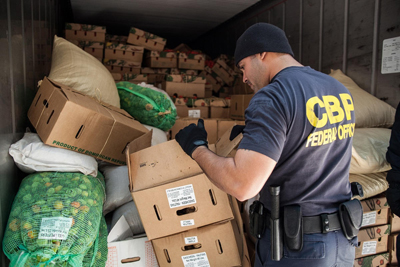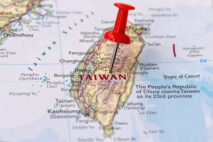Name a manmade product, and chances are good there is some intellectual property (IP) involved. And companies with patented goods are all looking for ways to protect their products from infringers.
The printer consumables industry is no exception. While printers themselves are patented, so too are the consumables they use. Printer original equipment manufacturers (OEMs) hold patents on ink and toner cartridge designs as well as various elements of cartridge designs, such as chipsets, drum units, and coupling mechanisms.
Similar to other high-tech companies, printer OEMs employ teams to protect their intellectual property. But while printer OEMs can and do fight infringement on their own, they have also found that it can be advantageous to work together on infringement issues. With the help of the Imaging Supplies Coalition (ISC), member OEMs work together to share information on counterfeit and infringing consumables. They also jointly educate U.S. Customs and Border Protection (CBP), enabling this federal law enforcement agency to enforce intellectual property rights at U.S. ports more effectively.
The partnership between printer OEMs, the ISC, and CBP has been effective in slowing the flow of infringing consumables into the United States. It thus presents a good example for other industries looking to achieve similar results.
General Exclusion Orders and Their Enforcement
In the United States, Section 337 of the Tariff Act of 1930 makes unfair competition and unfair acts related to importing and selling certain products in the U.S. unlawful. Intellectual property violations are one such type of unfair act. The U.S. International Trade Commission (ITC) holds what are called Section 337 investigations when, for example, a patent holder believes companies are importing and then selling infringing products into the United States. Unlike U.S. federal courts, the ITC cannot award a complainant money, but the ITC can award complainants something that may even more valuable: exclusion orders, either limited exclusion orders (LEOs), meaning they apply only to specific companies, or general exclusion orders (GEOs), meaning that they apply to all infringing products regardless of manufacturer. CBP is then charged with enforcing these exclusion orders.
If CBP’s import specialists detect products at U.S. ports that violate a GEO, CBP then issues an exclusion order letter to the violator as well as the ITC. The infringing products are held by CBP and the importer must arrange for them to be exported at the importer’s expense. The ITC will then issue a seizure-and-forfeiture order that declares that any subsequent imports that violate this same GEO will be seized and forfeited to the U.S. government.
There are currently six general exclusion orders (GEOs) on toner and inkjet cartridges that CBP is enforcing. (Until 2016, there were seven, but the patents protected by one GEO that had been awarded to Canon expired that year.) Of the six GEOs currently enforced, three have been awarded to HP, two to Epson, one to Canon, and one to Lexmark.
The ISC
 Founded in 1994, the ISC is a non-profit trade association comprised of member printer OEMs and dedicated to combatting illegal activity in the printer industry. Allen Westerfield has served as president of the ISC since 2006. The ISC’s current members are Brother, Canon, Epson, HP, Lexmark, Samsung, and Xerox.
Founded in 1994, the ISC is a non-profit trade association comprised of member printer OEMs and dedicated to combatting illegal activity in the printer industry. Allen Westerfield has served as president of the ISC since 2006. The ISC’s current members are Brother, Canon, Epson, HP, Lexmark, Samsung, and Xerox.
Mr. Westerfield explains the ISC’s mission thusly: “Basically, we provide the coalition as an umbrella organization that allows competitors to work together within the framework of the coalition, which is focused on IP protection.” Mr. Westerfield says that through the ISC OEMs can work together to share information and best practices. He states that the ISC also serves as the voice of the OEM consumables industry to various entities, including supplies distributors, the government, and the supplies aftermarket. Mr. Westerfield says that the ISC also performs an important PR function. Through the articles, speeches, and conferences (including the ISC’s own conference, held every two years) in which the ISC participates, the coalition helps grow awareness of illegal activities in the consumables market and how to avoid counterfeit and infringing products.
The ISC’s mission has long been to combat the illegal trade in counterfeit imaging supplies. But after OEMs were awarded GEOs by the U.S. ITC that were designed to prevent the importation and sale of infringing consumables supplies, the ISC took on a new role: Working with CBP to see that these orders were enforced. The ISC already had an established working relationship with CBP due to its work on counterfeiting issues. The ISC then used its experience and expertise in working with CBP on counterfeiting issues to help members work with CBP on enforcement. Matt Barkley, worldwide brand protection manager for HP, explains, “The ISC was set up and found its feet with counterfeiting. GEOs came along and that fit within the ISC’s charter.”
The ISC’s role in advocating for members on consumables IP enforcement issues is clearly valued by its members. For example, Jilana Miller, assistant general counsel at Epson America, dubs the ISC “one of the most effective organizations of its type in the U.S. and internationally.” She adds, “The ISC has been very successful in fostering fair competition and respect for intellectual property rights in the imaging supplies industry. We believe that the ISC is one of the few industry coalitions that has developed such close working relationships with U.S. Customs.”
Jeff Sampson, senior marketing manager for the printing division of Samsung Electronics America’s Enterprise Business Division, as well as current chairman of the ISC’s board of directors, says that whether a company’s main focus is anticounterfeiting (as is the case with Samsung), exclusion order enforcement, or both, the ISC provides “strength in numbers.” He explains, “We hear each other’s best practices [for IP enforcement], where we have been successful, and where we should make further investments.”
Andrew Gardner, worldwide brand protection manager for Lexmark, states, “What the ISC does is it enables us to come together with other industry players on common issues such as IP violations. And it gives us a stronger voice when we talk to government agencies, such as Customs.” He adds, “What the ISC gives us is the ability to tell a stronger story. It is easier to do as a group.”
Mr. Barkley concurs with his colleagues that the group dynamics provided by the ISC are valuable. He points out that the ISC demonstrates that “competitors can get together and work on areas of common interest, particularly around IP. We can work together despite our intensely competitive nature.”
CBP’s Improved Enforcement of Exclusion Orders
The first of the GEOs on printer cartridges was awarded in 2007. There has been a learning curve—for both printer OEMs and CBP—in ensuring that these orders are enforced. But OEMs worked together with the ISC to educate and train CBP officials and share intelligence. Those efforts, combined with some organization changes at CBP, have resulted in better enforcement of GEOs.
A CBP spokesperson explains that enforcing GEOs is very different from CBP’s other activities. “Exclusion order enforcement is different from other CBP enforcement activities for many reasons. First off, CBP is enforcing a court order issue by the USITC,” says the spokesperson.
Epson’s Ms. Miller concurs, saying, “CBP is one of the few Customs agencies in the world that very actively excludes imports of counterfeits. In recent years, CBP has also developed considerable expertise in enforcing ITC exclusion orders. Enforcing patent rights can be much more difficult than excluding counterfeits because the patent laws are complex and the innovations protected by patents can be difficult to understand for effective enforcement.”
Because CBP does not publicly publish its enforcement actions, the only way for outsiders to measure CBP’s effectiveness in enforcing GEOs is via the seizure-and-forfeiture orders that the ITC issues. Prior to 2015, we typically saw just a couple of such orders issued a year related to violations of ink and toner cartridge GEOs. However, that total climbed to 60 in 2015 and to 72 in 2016. In 2017, however, the total has decreased from 2015/2016 levels. When asked about the reason for the decline, CBP’s spokesperson attributed the decline to the expiration of the GEO awarded to Canon in the 337-TA-829 investigation (see “Canon Says Sayonara to Twisted Prism Gear GEO”). Despite the downturn in seizure-and-forfeiture orders in 2017, the OEMs whose GEOs are being enforced feel that CBP’s ability to enforce these orders has only gotten better over the years.
The ISC’s Role in Improved GEO Enforcement
One big factor in improved enforcement of GEOs is that the ISC helped OEMs coordinate their education efforts with CBP. Mr. Westerfield explains that the ISC has had a good working relationship with Customs for years due to the ISC’s work with CBP on counterfeiting issues. But he admits that after OEMs were awarded their first GEOs, it was hard to get Customs’ attention on the printer supplies industry given all CBP’s other priorities.
Mr. Westerfield says that as GEOs on consumables began to be handed down the ISC made it an objective to improve its members’ working relationship with CBP in the area of enforcement. Efforts started at the executive level with the CBP commissioner’s staff on how best to work together, and then the ISC and members would go to individual ports where they believed infringing consumables were coming in to educate inspectors on how to spot them.
According to Mr. Westerfield, a real turning point in GEO enforcement came when CBP established various Centers for Excellence and Expertise (CEE). And while the establishment of the CEEs improved enforcement of IP, the ISC played a crucial role for its members as CBP reorganized.
Organizational Changes at Customs
Around 2011, CBP began a program “to align our trade processing procedures more closely to the ways our industry stakeholders operate.” CBP established CEEs to process trade activities in different industry sectors, and by 2016 all 10 centers were fully operational. The CEE served as a central authority for various industry-specific issues and could review importation for specific categories of goods coming into the United States through all ports of entry.
Originally, printer consumables were under the purview of the Electronics CEE in Long Beach/Los Angeles, CA. Whereas previously educational efforts had to be conducted from port to port, once the printer consumables CEE were being overseen by the CEE for Electronics, there was one central point of contact.
Mr. Westerfield states, “We could then work intimately with the CEE and educate them on our industry problems, how to authenticate cartridges, and how to identify infringement. They assisted us and spread the information throughout ports of entry into the U.S. Whereas before, we used to have to work with every port individually, we can now work with a CEE to spread information throughout the ports.” Mr. Gardner adds that once the CEE were formed, education was still necessary on a port-by-port basis, but on issues like GEO enforcement OEMs found it was necessary to have conversations with higher levels of management inside CBP. Mr. Gardner says the ISC excelled at facilitating conversations at the highest levels with CBP about GEO enforcement.
Mr. Westerfield says that the ISC is the coordinator that sets up meetings and manages members’ relationship with CBP. Currently, the ISC’s members meet with CBP quarterly—two times a year face-to-face and two times via videoconference. CBP is also now allowing the ISC and its members to participate in national webinars so that many CBP agents can be educated at once on general exclusion orders and anticounterfeiting issues.
Mr. Barkley and Mr. Gardner say that multivendor training sessions were attractive to CBP for several reasons. Mr. Gardner says, “If you look at exclusion orders, I think that the growth in orders really has stretched capabilities of enforcement agencies. Being able to go them [Customs] in a group [via the ISC]and highlight issues, saves them time and saves us time.” Mr. Barkley says, “The attractiveness of having one vendor come in for training is much less than having four or five companies for omnibus training. We came together [through the ISC]and said, “Let’s work together to train the ports.’ Customs said, ‘We’d really love that.’ They would prefer multiple trainings in one shot.” Mr. Barkley notes that while CBP is charged with ensuring GEOs are not violated, CBP does not want to “unduly impede the flow of commerce while executing the law and regulations under their charter.” He adds, “Thus, when we provide training, improving CBP’s efficiency and targeting, it is a good thing.”
Mr. Gardner points out that multivendor training is beneficial in another way; it is better aligned with what Customs actually sees. He says, “If you think about [aftermarket cartridge]shipments into the U.S., rarely is a shipment just one brand. If they have a multibrand container, there may be multiple violations.”
Mr. Sampson adds that in addition to the benefits for CBP, the ISC’s coordination of its members’ interactions with CBP benefits members as well. He says that the ISC’s role in facilitating and scheduling training and meetings makes things “easier and more expeditious.” And ISC members also saw the benefits of working together as CBP was able to better enforce OEMs’ IP rights.
Ms. Miller adds that as CBP’s CEEs and import specialists “have developed much greater expertise regarding printer-related exclusion orders,” this has resulted in better enforcement because it led to inspectors at the ports being better able to make informed and quick decisions about exclusions rather than relying on CBP’s IPR branch, which, while it has strong patent expertise to guide CBP officers when there are legal issues regarding detained shipments, are too busy to guide every decision regarding exclusions. Mr. Barkley agrees saying that some of the most important work in GEO enforcement comes in training port inspectors, “the people who examine shipments and make the front-line determination.”
Things were going well with the Electronics CEE overseeing printers consumables, but, starting June 1, 2016, there was a change in the CEE handling printer consumables. The printer consumables category was moved from the Electronics CEE in Long Beach to the Machinery CEE in Laredo, TX. A CBP spokesperson explains:
The enforcement of ink/toner exclusion orders were being conducted by the Electronics Center of Excellence and Expertise based in Los Angeles until June 1, 2016. At that point, it was transferred to the Machinery Center of Excellence and Expertise based in Laredo, TX. The Centers are commodity-driven entities; the ink and toner cartridges harmonized tariff classifications fall under the jurisdiction of the Machinery Center.
Mr. Westerfield tells us that having consumables fall under the Electronics CEE was always meant to be temporary because of the harmonized tariff classification for consumables. However, when CBP first formed the CEEs, the ISC had been working closely with the facility in Long Beach because that is where Customs’ National Targeting and Analysis Group (NTAG) is located, and CBP decided to temporarily place consumables with the Electronics CEE to demonstrate that the ITC’s exclusion orders in this category could be enforced more effectively.
Mr. Westerfield says that a transition plan was put in place to move oversight of printer consumables to the Machinery CEE in Laredo. The ISC and its members had a half-day meeting with the Machinery CEE before the June 1 transition. Since then, Mr. Westerfield says, “We have continued working with the Machinery CEE just as we did the Electronics CEE. It was a very, very effective transition.” Mr. Sampson concurs, saying, “I am amazed at how easily they transitioned. The Electronics group worked to bring Machinery up to speed. From my perspective, it seemed almost seamless.”
The consensus seems to be that the close relationship that the ISC helped foster between OEMs and CBP has been highly beneficial in enabling CBP to enforce exclusion orders more effectively. Epson’s Ms. Miller states, “The ITC actions and Customs enforcement have been very effective in limiting infringing exports by the largest Chinese aftermarket companies.”
As the industry changes, so do strategies for effective enforcement. For example, Ms. Miller states that Epson has been “working with CBP to improve enforcement against smaller aftermarket companies that are using more evasive tactics to export infringing cartridges for U.S. distribution.” She notes there have also been changes in printer supplies marketing and import logistics, as Internet marketing channels have become more important for this product category.
Mr. Gardner says OEMs are seeing an uptick in smaller quantities of infringing cartridges brought in via air courier services and that detecting infringing cartridges brought in like this is “very difficult.” He adds, “It is hard enough when you are looking at ocean freight with 6,000 to 10,000 containers. But when small shipments are coming in via air carrier overnight, those shipments need to move quickly. Detecting infringing consumables in that quantity of goods is a challenge.”
Mr. Barkley adds that the way products make it to market is different than it was 10 years ago and both OEMs and CBP need to adapt. “Sunlight needs to be shed on how infringing consumables are making it to market,” he says, noting the ISC enables OEMs to work together to identify such changes and share the information with CBP.
Mr. Sampson says that given the myriad of other activities under CBP’s purview, “It is gratifying they have such a high level of interest in our area [consumables IP enforcement].”
An Effective Model of Cooperation
Cooperation is, by its very nature, complex. There is a lot of hard work involved. But when it comes to seeing effective enforcement of the ITC’s exclusion orders protecting patent rights, the consensus seems to be that cooperation leads to better results. As HP’s Mr. Barkley puts it, “The nature of the printing industry is such that issues that impact one of the players can have impact on the other players and likewise the activities of one player in the industry can have impacts or benefits on other players.” He adds that the ISC provides an important way for OEMs to share initiatives and collaborate—both to work with CBP on better enforcement but also to educate the consumer market. Ms. Miller states, “We commend the ISC for its exemplary leadership in patiently and skillfully developing strong relationships between the ISC members and CBP.”
CBP seems to feel that the cooperation that the ISC drove between CBP and printer OEMs on patent rights enforcement has been an effective model. CBP’s spokesperson says, “In my opinion, the printer consumables industry is taking a much more proactive effort to support the exclusion process enforced by CBP.” CBP also concurs that the educational sessions that the ISC organizes to share information with CBP are important. The spokesperson for the agency says, “The training provides first-hand knowledge of the OEM’s products protected technologies,” adding, “The ISC is an important element in the exclusion process; they are the cohesive force that bring the stakeholders together.”
The ISC’s Mr. Westerfield says there are lessons to be learned from the work the ISC and its members have done in coordination with CBP to ensure that the ITC’s exclusion orders are enforced and that counterfeits do not make their way into the United States. He says, “An industry can develop a working relationship with Customs that benefits both Customs and members of industry. The key is establishing a relationship at the right level, education, and mutual respect. Once a relationship has been established, Customs can better do their job and it benefits the industry because Customs is working on our behalf to protect IP rights. Any industry that wants to be effective in seeing its IP rights enforced should develop that relationship with Customs.”






